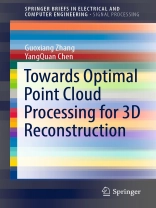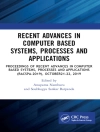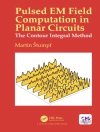This Springer Brief presents novel methods of approaching challenging problems in the reconstruction of accurate 3D models and serves as an introduction for further 3D reconstruction methods. It develops a 3D reconstruction system that produces accurate results by cascading multiple novel loop detection, sifting, and optimization methods.
The authors offer a fast point cloud registration method that utilizes optimized randomness in random sample consensus for surface loop detection. The text also proposes two methods for surface-loop sifting. One is supported by a sparse-feature-based optimization graph. This graph is more robust to different scan patterns than earlier methods and can cope with tracking failure and recovery. The other is an offline algorithm that can sift loop detections based on their impact on loop optimization results and which is enabled by a dense map posterior metric for 3D reconstruction and mapping performance evaluation works without any costly ground-truth data.
The methods presented in Towards Optimal Point Cloud Processing for 3D Reconstruction will be of assistance to researchers developing 3D modelling methods and to workers in the wide variety of fields that exploit such technology including metrology, geological animation and mass customization in smart manufacturing.
قائمة المحتويات
1. Introduction.- 2. Preliminaries.- 3. Fractional-Order Random Sample Consensus.- 4. Online Sifting of Loop Detections for 3D Reconstruction of Caves.- 5. Dense Map Posterior: A Novel Quality Metric for 3D Reconstruction.- 6. Offline Sifting and Majorization of Loop Detections.- 7. Conclusion and Future Opportunities.- Appendix: More Information on Results Reproducibility.
عن المؤلف
Dr.
Guoxiang Zhang completed his Ph.D. program at University of California Merced in Spring 2021. His research interests are in 3D point cloud processing, semantic mapping with applications in cave exploration drones and autonomous driving systems. The loop-detection method he invented has the top performance on several real world datasets. His work on more informed RANSAC won the best presentation award from the 2020 ICCMA conference. His foundational code contributions in Julia for 3D reconstruction application are being widely used.
Dr.
Yang Quan Chen is now a full professor at the School of Engineering, University of California, Merced. He was on faculty of Electrical and Computer Engineering Dept. of Utah State University, Logan, Utah from 2000 to 2012 where he was a tenured associate professor and the Director for the Center for Self-Organizing and Intelligent Systems (CSOIS) from 2004-2012. Dr. Chen published many books, papers and patents. He served as the General Co-Chair for ICUAS 2014 and 2017, 2019 (International Conference on Unmanned Aircraft Systems), and was on the editorial board for journals like
IEEE Transaction on Control Systems Technology,
ISA Transactions, IFAC journals of
Control Engineering Practice, ASME
Journal of Dynamics Systems, Measurement and Control. He serves as associate editor for IFAC
Mechatronics,
Fractional Calculus and Applied Analysis, and
Nonlinear Dynamics, as well as again ASME
Journal of Dynamics Systems, Measurement and Control. He is now serving as the Topical Editor-in-Chief (Field Robotics) on
International Journal of Advanced Robotics Systems (IJARS) and
Intelligent Service Robotics. His Publon H-index is 63 with more than 17.1k citations, Google Scholar citation is 39.7k with H-index 88, H10-index 512. Prof. Chen was selected in the 2018, 2019, 2020 Highly Cited Researchers List by Clarivate.












